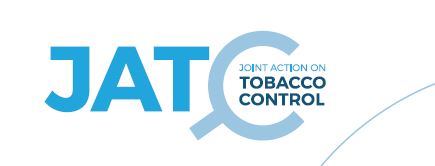Previous projects

Joint action on tobacco control
Cigarette and other forms of tobacco use are considered the leading cause of premature morbidity and mortality worldwide. Efforts to reduce the devastation of tobacco-related death and disease in the European Union consist of the Tobacco Products Directive (TPD) and the World Health Organization (WHO) Framework Convention on Tobacco Control (FCTC). The TPD sets out rules governing the manufacture, presentation and sale of tobacco and related products. The TPD stipulates that Member States require manufacturers and importers of tobacco products to provide their competent authorities with information via a common gateway (EU-CEG): an IT tool designed to ensure uniform application of information and notification obligations, harmonise data submission, facilitate comparison and reduce administrative burden.
The overall objective of the Joint Action on Tobacco Control will be to support the implementation of the TPD in the 28 EU Member States through EU-CEG data analysis, support for laboratory collaborations and the effort to evaluate priority additives.
The specific objectives of the project are:
– Ensure appropriate coordination and evaluation of the information received
– Support the dissemination of information to the public, regulators and researchers
– Improve ease of access to data collected through the EU-CEG
– Monitor and support the tasks of regulating tobacco products and electronic cigarettes
– Assist in the creation of EU MS networks and laboratory collaborations for tobacco assessment
– Support the EU in the process of monitoring and updating priority additives
– Integrate JATC results into national policies
Objective 1: Data from the Spanish National Health Survey (ENSE) 2011-12 are used. The population at risk is described throughout the Spanish territory and stratified by sex and by autonomous community.
Objective 2: The electronic medical record of Primary Care is explored. The assigned population and the population served in the Barcelona Health Region are selected considering two age groups: 35-49 years (potentially at risk) and 50-75 years (high risk). The results are compared with the theoretical proportion obtained with the ENSE and confidence intervals of proportions are calculated to estimate statistically significant differences between both groups.
Objective 3: A hypothetical cohort with the characteristics of the adult population at high risk of developing lung cancer and the population potentially at risk is studied using data from the ENSE 2011-12. Primary and secondary prevention interventions applied to high-risk and potentially at-risk population groups are combined: brief intervention to quit smoking, intensive treatment to quit smoking and organized screening. To determine the effectiveness of each of the interventions, a systematic review of the literature is carried out to obtain different percentages of cessation of consumption. The baseline scenario (no intervention) is compared with three preventive strategies, which combine primary and secondary prevention interventions applied to both population groups.
Objective 4: The population at risk calculated from the ENSE 2011-12 is considered. Two scenarios are estimated and compared, the current scenario and new hypothetical scenarios derived from the introduction of the different strategies, considering different percentages of implementation of the interventions.
36 months from 10/16/2017 to 10/15/2020
Grant No. 761297 European Commission CHAFEA (€2,498,773.08)
Dr Panagiotis Behrakis (Hellenic Cancer Society, Greece)
Carnicer-Pont D, Tigova O, Havermans A, Remue E, Ferech M, Vejdovszky K et al. Tobacco products in the European Union Common Entry Gate (EU-CEG): A tool for monitoring the EU tobacco products directive. Tobacco Prevention & Cessation . 2022;8(March):10. doi: 10.18332/tpc/145501 .
